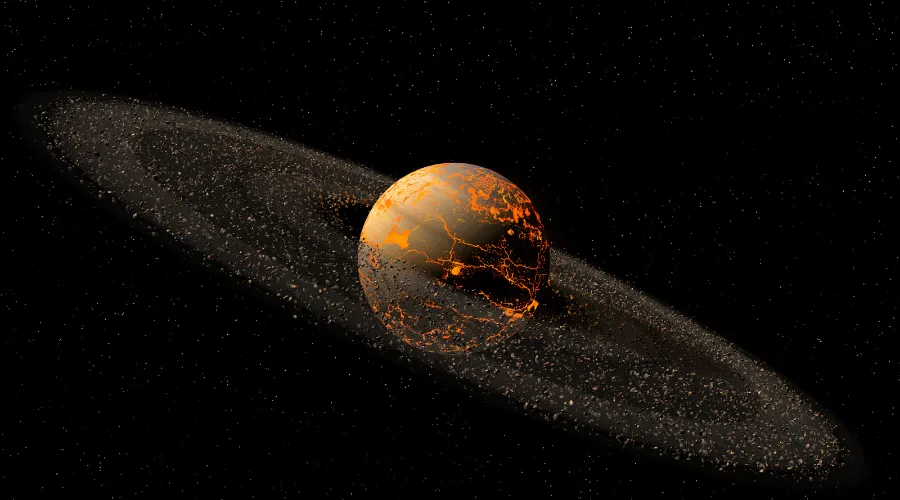Rogue Planets: How Scientists Detect These Dark Celestial Bodies

Rogue planets, those enigmatic wanderers of the cosmos, drift through the vastness of space untethered to any star.
Anúncios
These celestial nomads, shrouded in darkness, challenge our understanding of planetary systems and push the boundaries of astronomical detection.
Unlike planets orbiting stars, rogue planets are elusive, emitting little to no light and defying traditional observation methods.
Yet, scientists have developed ingenious techniques to uncover these hidden worlds, revealing their presence through subtle cosmic clues.
This article explores the cutting-edge methods used to detect rogue planets, weaving together the science, technology, and imagination driving these discoveries.
Why do these starless worlds matter, and what can they teach us about the universe’s untold stories?
Understanding rogue planets not only enhances our knowledge of planetary formation but also informs us about the potential for life in extreme environments.
The Cosmic Orphans: Understanding Rogue Planets
Imagine a planet cast adrift, like a ship without an anchor, floating through the interstellar void.
Rogue planets, also known as free-floating planets, are not bound to a parent star’s gravitational embrace.
They may form in stellar nurseries, only to be ejected during chaotic gravitational interactions, or they might emerge directly from collapsing gas clouds, bypassing star formation entirely.
Their isolation makes them nearly invisible, as they lack a star’s reflected light or the warmth of a nearby sun to betray their presence.
Estimates suggest there could be billions of rogue planets in the Milky Way alone, with a 2020 study from the University of Leiden proposing up to 50 billion such worlds based on microlensing surveys.
Their diversity is staggering—some are gas giants, others rocky worlds, and a few may even harbor subsurface oceans, hinting at potential habitability.
Detecting these objects requires scientists to think beyond conventional telescopes and embrace innovative approaches.
The challenge lies in spotting something that emits no light and blends seamlessly into the cosmic background.
Fortunately, astronomers have developed a toolkit of methods to pierce this veil of darkness, each offering a unique window into the rogue planet population.
The ongoing research into rogue planets emphasizes their significance in understanding the dynamics of our galaxy.
Gravitational Microlensing: A Cosmic Magnifying Glass
One of the most powerful techniques for detecting rogue planets is gravitational microlensing, a phenomenon rooted in Einstein’s theory of general relativity.
When a rogue planet passes in front of a distant star, its gravity bends the star’s light, temporarily amplifying its brightness.
This fleeting event, lasting from hours to days, acts like a cosmic magnifying glass, revealing the planet’s presence without directly observing it.
The Optical Gravitational Lensing Experiment (OGLE) has been a pioneer in this field, identifying numerous rogue planet candidates since the 1990s.
Microlensing is particularly effective for detecting low-mass objects, including Earth-sized rogue planets, which are otherwise nearly impossible to spot.
For example, in 2022, astronomers using the Korea Microlensing Telescope Network announced the discovery of a rogue planet roughly twice Earth’s mass, detected through a microlensing event lasting just 12 hours.
This method’s strength lies in its sensitivity to objects far from any star, but it’s not without limitations.
Microlensing events are rare and non-repeatable, requiring constant monitoring of millions of stars.
+ The Great Attractor: A Cosmic Enigma Pulling the Universe Together
Table below summarizes key aspects of this technique:
| Aspect | Details |
|---|---|
| Principle | Gravity bends light from a background star, amplifying its brightness. |
| Best For | Low-mass planets, including Earth-sized rogues. |
| Challenges | Rare events, requires extensive sky monitoring. |
| Key Projects | OGLE, MOA, Korea Microlensing Telescope Network. |
Recent advancements in microlensing have opened new avenues for detecting rogue planets, enhancing our understanding of their distribution in the galaxy.

Infrared Surveys: Catching the Faint Glow
While rogue planets emit no visible light, they can radiate faint infrared energy, a remnant of their formation or internal heat.
Young rogue planets, still cooling from their birth, glow faintly in infrared wavelengths, offering a tantalizing clue to their existence.
Space-based telescopes like the Wide-field Infrared Survey Explorer (WISE) and the upcoming Nancy Grace Roman Space Telescope are designed to detect this subtle warmth.
By scanning vast swaths of the sky, these instruments can identify objects that don’t align with known stars or galaxies.
Consider a hypothetical rogue planet, dubbed “Wanderer-1,” discovered by WISE.
This Jupiter-sized world, roughly 100 light-years away, emits a faint infrared signature due to residual heat from its formation 10 million years ago.
Such discoveries highlight the power of infrared surveys, but they also underscore the challenge of distinguishing rogue planets from other dim objects, like brown dwarfs.
Advanced algorithms and machine learning now play a critical role in sifting through data to pinpoint true planetary candidates.
The table below outlines the strengths and limitations of infrared surveys:
| Aspect | Details |
|---|---|
| Principle | Detects faint infrared emissions from young or warm rogue planets. |
| Best For | Young, massive planets with residual heat. |
| Challenges | Distinguishing planets from brown dwarfs; requires high-sensitivity instruments. |
| Key Instruments | WISE, Spitzer, Nancy Grace Roman Space Telescope. |
The integration of infrared technology in astronomy is revolutionizing our ability to uncover celestial bodies that were once thought to be undetectable.
++ When Will the Milky Way Collide with Andromeda? Understanding Galaxy Collisions
Astrometry: Tracking Invisible Tugs
A lesser-known but promising method for detecting rogue planets is astrometry, which measures the tiny wobbles in a star’s position caused by a passing planet’s gravity.
Unlike microlensing, which relies on light amplification, astrometry tracks positional shifts with exquisite precision.
The Gaia spacecraft, launched by the European Space Agency, has revolutionized this field by mapping the positions of over a billion stars with unprecedented accuracy.
A rogue planet passing near a star can induce a measurable shift, revealing its mass and trajectory.
Picture a rogue planet, “Drifter-B,” crossing the path of a distant star.
Gaia detects a minute wobble in the star’s position, equivalent to the width of a human hair seen from 1,000 miles away.
This precision allows astronomers to estimate the planet’s mass and distance, offering a complementary approach to microlensing and infrared surveys.
However, astrometry is most effective for massive rogue planets and requires long-term observations to confirm detections.
Its potential is immense, especially as Gaia’s data continues to be analyzed.
The advancements in astrometry underscore the importance of precise measurement techniques in modern astronomy.

The Statistical Powerhouse: Population Studies
Beyond direct detection, scientists use statistical methods to infer the presence of rogue planets by studying their impact on galactic populations.
By combining microlensing, infrared, and astrometric data, researchers can estimate how common these worlds are.
A landmark 2021 study published in Nature Astronomy used microlensing surveys to estimate that rogue planets may outnumber stars in the Milky Way by a factor of two.
This statistic underscores their significance in galactic ecosystems, suggesting they could play a role in dispersing organic material or even hosting microbial life in subsurface environments.
Population studies also help refine detection strategies.
For instance, if rogue planets are more common in certain regions, like the galactic bulge, astronomers can prioritize those areas for observation.
These studies rely on computational models that simulate planetary ejections and formation processes, offering insights into the origins of these wandering worlds.
The interplay of observation and theory creates a robust framework for understanding their prevalence and properties.
The increasing collaboration between observational and theoretical astrophysics is paving the way for groundbreaking discoveries in the field.
Why Rogue Planets Matter
The quest to detect rogue planets isn’t just a technical challenge—it’s a window into the universe’s deeper mysteries.
These worlds challenge the traditional definition of a planet, prompting us to rethink how planetary systems form and evolve.
Their potential to harbor life, even in the absence of a star, raises profound questions about habitability.
Could a rogue planet with a geologically active core sustain a subsurface ocean, much like Europa or Enceladus?
Such possibilities fuel both scientific inquiry and speculative wonder.
Moreover, rogue planets serve as natural laboratories for testing gravitational theories and studying planetary atmospheres without the interference of stellar radiation.
Each detection adds a piece to the puzzle of cosmic evolution, revealing the dynamic processes that shape galaxies.
The diversity of detection methods—microlensing, infrared surveys, astrometry, and population studies—demonstrates the ingenuity of modern astronomy in tackling seemingly impossible challenges.
For further reading on the implications of rogue planets, check out NASA’s overview on exoplanets and rogue worlds.
The Future of Rogue Planet Detection
As technology advances, the hunt for rogue planets is poised to accelerate.
The Nancy Grace Roman Space Telescope, set to launch in 2027, will conduct a dedicated microlensing survey, potentially identifying hundreds of rogue planets.
Meanwhile, the Vera C. Rubin Observatory’s Legacy Survey of Space and Time (LSST) will monitor billions of stars, increasing the odds of catching microlensing events.
These projects, combined with Gaia’s astrometric precision and next-generation infrared telescopes, promise a golden era for rogue planet discoveries.
Artificial intelligence will also play a pivotal role, analyzing vast datasets to identify subtle signals that human observers might miss.
The synergy of these tools will not only reveal more rogue planets but also refine our understanding of their origins, compositions, and potential for life.
The question remains: how many untold stories are hidden in the darkness, waiting to be uncovered by the next breakthrough?
Collaboration between technology and astronomy is set to redefine our understanding of the cosmos in the coming years.
Conclusion: Illuminating the Invisible
Rogue planets, those solitary travelers of the cosmos, remind us that the universe is full of surprises.
Through gravitational microlensing, infrared surveys, astrometry, and population studies, scientists are peeling back the veil on these dark celestial bodies.
Each method offers a unique perspective, from catching fleeting gravitational effects to detecting faint infrared glows.
Together, they paint a picture of a galaxy teeming with worlds unbound by stars, each holding clues to the universe’s past and future.
As we stand on the cusp of new discoveries, one thing is clear: the journey to find rogue planets is as much about exploring the unknown as it is about illuminating our place in the cosmic tapestry.
The pursuit of knowledge in this domain continues to inspire awe and curiosity, pushing the boundaries of human understanding.
